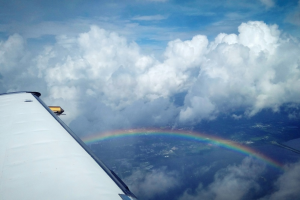
© Kendra R. Sand
CapeEx19
The Cape Experiment 2019 was conducted with the Weather Modification International (WMI) Cessna Citation II Research Aircraft based in Titusville, Florida. In a period of two weeks in July and August 2019 research flights were conducted in thunderstorm anvils near Cape Canaveral. The project was funded by NRL in an effort to improve the understanding of thunderstorms. Dominant ice particle types found in the convective anvils were plates and aggregates of plates. Occasionally, in situ formed cirrus with bullet rosettes and small columnar ice particles were sampled.